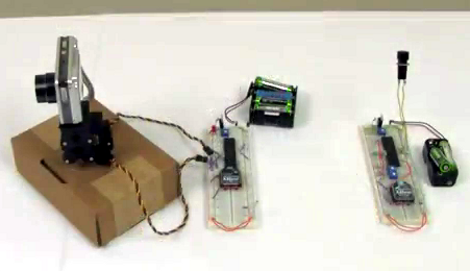
The hidden abilities of this robot that is no larger than a dinner plate are quite impressive. It doesn’t let an obstacle like a building get in its way. The Sand Flea, like its namesake, posses a remarkable jumping ability. When it encounters a tall obstruction two levers incline the front of the robot and it launches itself up to thirty feet in the air. In the case of a one-story build this means it will end up on the roof, and it’ll do so much quicker and more reliably than any wall climber we’ve seen.
It’s being developed for the US Army by Boston Dynamics, and this isn’t the first time we’ve seen the concept. But the video after the break gives a much better look than the grainy twenty-second clip from last year. Of course they’re not giving up too many details so we have to guess a bit. We’d wager the launching mechanism is a solenoid, but at about eleven pounds you need a lot of juice to get that much of a jump. We suppose it’s also possible that there’s an explosive system like the butane combustion used in a framing nailer. The video summary mentions that there’s a stabilization system to keep the body oriented during flight. That’s got to be a gyroscope. Let us know what you think in the comments. Continue reading “Sand Flea Literally Leaps Tall Buildings In A Single Bound”












